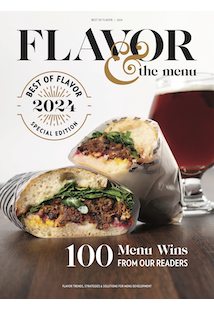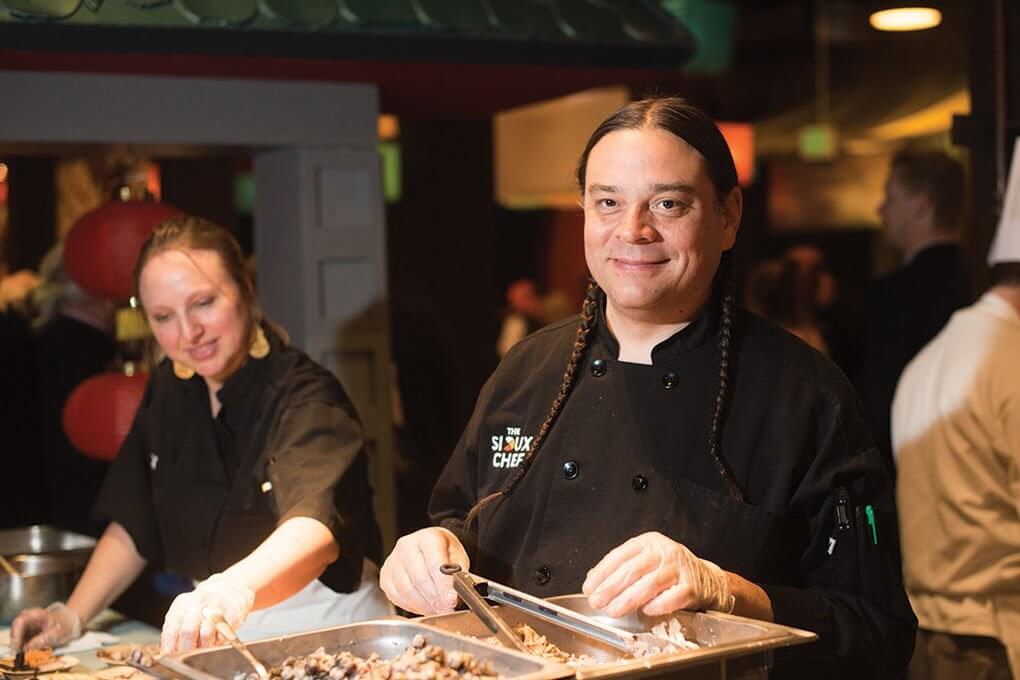With so much focus on the global mash-up—and with evidence across menus that its proliferation is in full swing—it’s important to peer around the next corner, seek out the next global flavor frontier. Gerry Ludwig, corporate consulting chef, Gordon Food Service, is an expert at ferreting out menu opportunities. Here are a number of his observations, all gleaned from The Culinary Institute of America’s recent Worlds of Flavor conference at its St. Helena, Calif., campus.
“The variety of flavors and textures in the dishes that were demonstrated and sampled was striking—some rich and indulgent, some spicily exotic, others simply comforting—but all prompted attendees to begin discussing ways that these foods and flavors could be incorporated into today’s menus,” he says.
Native Inspiration
Ironically enough, Native American cuisine is one of the least represented in American food culture. Sean Sherman, founder/chef and CEO of The Sioux Chef, a group dedicated to revitalizing Native American cuisine, showcases the opportunity for modern menus.
Sherman sheds a light on the “power of plant knowledge,” which his ancestors used to forage flavorful herbs and seasonings for their cooking, including wild bergamot, sage, cedar, juniper, sumac, mustard and rose hip. Native culinary techniques also offer menu potential, such as drying and milling native vegetables, including pumpkin, yuca and sunchokes, and drying meats and chopping them with berries to create pemmican.
“So, is it possible that the foods of this ancient and nearly lost culture could become a cuisine of the future? It’s fairly safe to say that its attributes—which include compelling flavors and textures, unique ingredients, freshness, sustainability and healthy nutritional profiles—match up well with the demands of today’s dining consumer,” says Ludwig.
3 Ingredients to Watch
Just when you think we’ve discovered all that is to be discovered, there’s always a “new” ingredient or flavor promising menu differentiation. Ludwig calls out three leading-edge ingredients, showcased at the CIA’s Worlds of Flavor conference.
- Bambara Groundnut—the “African chickpea,” it’s a prolific, versatile and nutritious legume indigenous to West Africa. “In the hands of a chef, the bambara groundnut may be transformed into a variety of craveable savory and sweet dishes,” he says. Examples include purées like hummus, beverage or soup infusions as a nut milk, and roasted and crumbled for textural dessert garnishes.
- Jollof Rice—a classic dish of West Africa, this rice resembles Spanish rice at first glance, but surprises the palate with complex flavor layers and heat. The traditional preparation involves cooking the rice in a purée of tomatoes, onion, fresh hot peppers, dried chiles, ginger, curry powder, and thyme that has first been fried in oil.
- Fonio—an African ancient grain that is described as “micro-couscous.” The smallest member of the millet family, it’s gluten-free and low glycemic. Fonio’s delicate texture and mouthfeel lend it to applications like tabbouleh and other grain salads.
Read more of Gerry Ludwig’s recap and insights from the CIA’s 2018 Worlds of Flavor conference.










